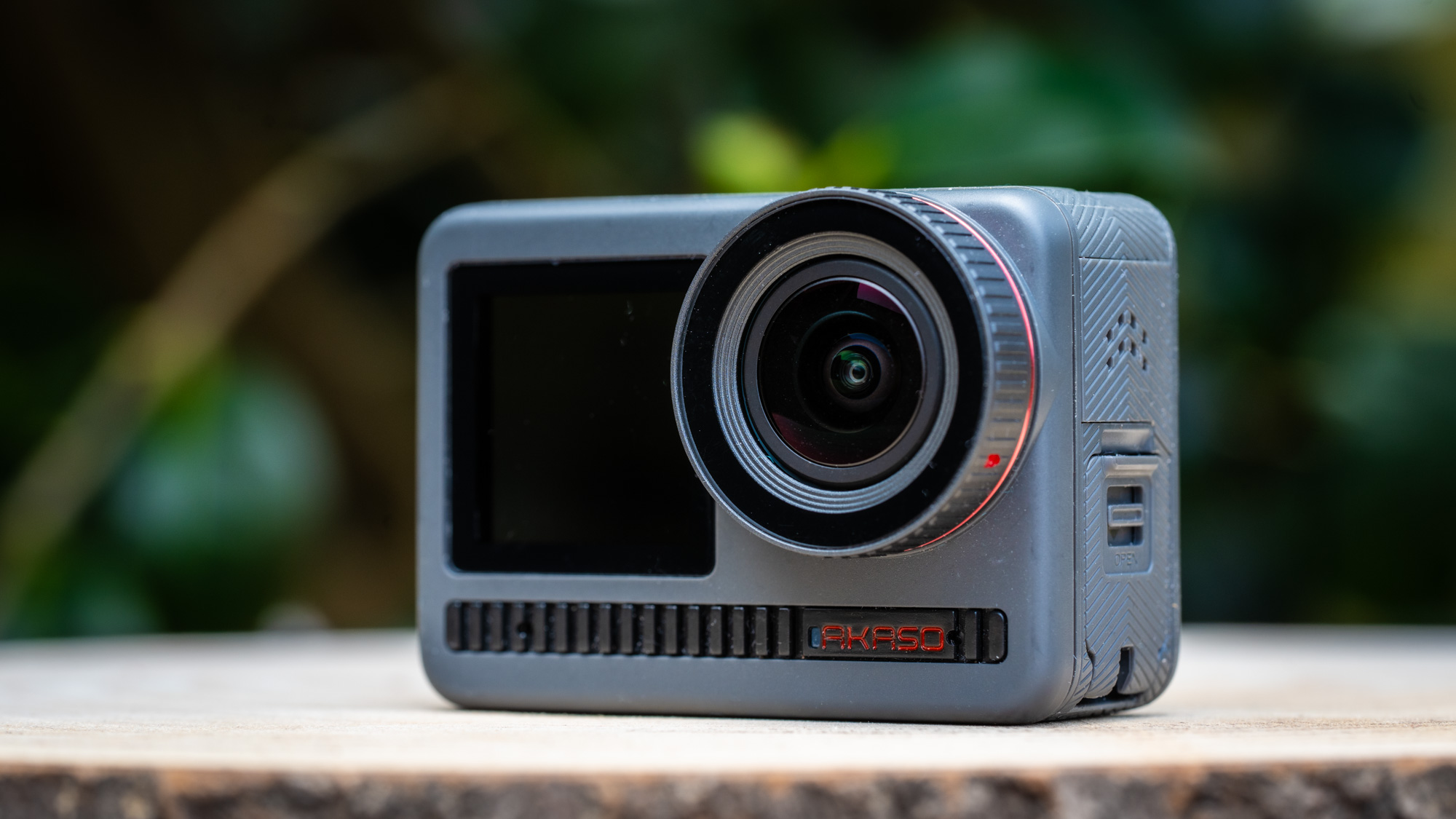TechRadar Verdict
Pros
- +
Familiar Design
- +
Front Facing Screen
- +
Includes 2x batteries and a good range of accessories
Cons
- -
Stabilization falls behind the premimum competition
- -
Price isn't as competitive as it seems
- -
App could be better
Why you can trust TechRadar
One-minute review
It looks like a GoPro with its mounting case and front-facing screen, but the Akaso Brave 8 comes at a more modest price, with image quality that will meet the demands of most users. With 2x batteries, a dual charger, a remote control, and a range of mounts, it has everything you need out of the box.
During my review, the small front-facing screen made it easy to vlog adventures, whilst the rear touchscreen was responsive enough to touch to make changing settings easy. However, there are also negatives; the image stabilization in-camera is good, without being great, but the so-called SuperSmooth option, which requires processing in the accompanying camera app, isn't a patch on what GoPro offers; and the improvement over the Brave 8's in-camera stabilization is modest. The app is useable but clunky in places, and the sound recording could also be improved.
Overall, the Akaso Brave 8 is a solid little action camera with all you need to get started; the video quality is good, and the stabilization ok if you aren't hammering the camera on a bike, be it pedal or motorized. The problem is that older generation GoPro Hero cameras can still be purchased new in some places for around the same price, and more recent ones will solve many of the faults of the Akaso Hero 8. So, whilst it is cheaper than the GoPro Hero 13 Black, those thinking about the Akaso Hero 8 may want to step back a GoPro generation or two instead. For ideas of other options check out our best action cameras guide.
That said, Akaso is an emerging brand, and its products regularly seem to be discounted or have extras, such as memory cards, also offered as part of the package. So if the stabilization and audio issues won't affect you significantly, it may be worth keeping your eyes open for an offer.
Akaso Brave 8: price and release date
The Akaso Brave 8 is available via Amazon and, at the time of writing, is priced at $289.99, but there is the option of a promotional $50 money-off voucher. In the UK, the kit also includes at 64GB Micro SD card and is £244.99, not including a £40 off voucher promotion.
Keep an eye out for deals and limited-time offers on Amazon, particularly during sales periods when additional memory cards or money-off vouchers may be applied.
Akaso Brave 8 specs
| Video | 4K / 60fps, slow motion up to 16x |
| Photo | 48MP |
| Sensor | 1/2-inch CMOS |
| Lens | 16mm f/2.5 |
| Battery | 1,550mAh |
| Weight | 4.05oz / 114.8g (include battery) |
| Size | 63x36.5x45mm |
| Waterproof | Up to 33ft / 10m |
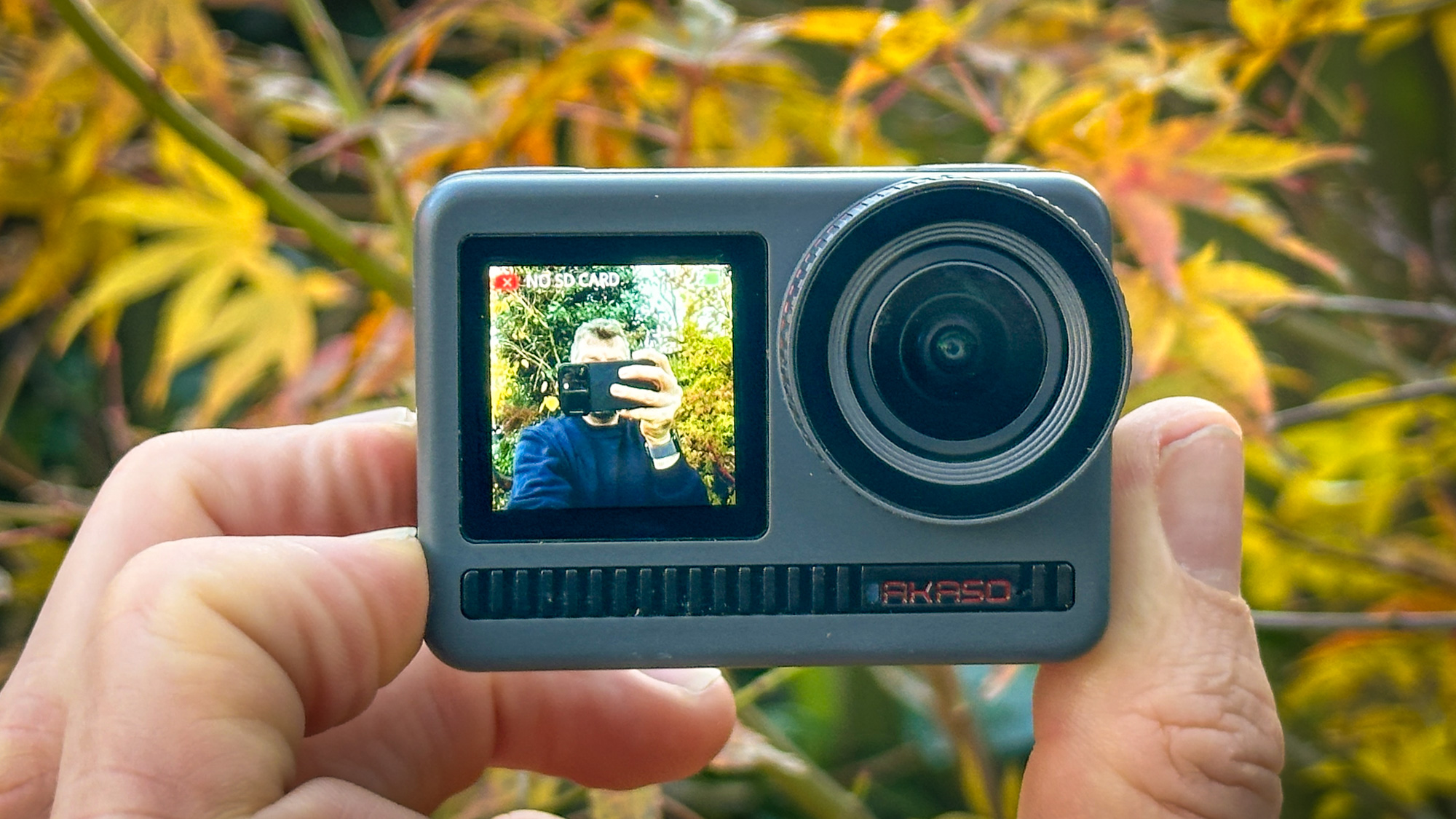
Akaso Brave 8: design
The Akaso Brave 8 action camera adopts a familiar design: let's be honest, it is a GoPro clone in a market that is already flooded with GoPro competitors. However, even at a glance, you can tell that it is far from a cheap knock-off, with a rear touchscreen, front facing screen, all packaged in a body that is waterproof up to a depth of 33ft / 10m.
Size-wise the Akaso Brave 8 measures 63x45x36.5mm which overall makes it slightly smaller than the GoPro Hero 13 Black, which measures 71.8 x 50.8 x 33.6mm
Behind the 16mm f/2.5 lens sits a 1/2 inch size sensor. As a comparison, the GoPro Hero 13 uses a 1/1.9inch sensor, which means the two sensor sizes are comparable. The sensor can capture images at up to a 48MP resolution, and video can be captured at up to 4K 60fps. If you want to shoot timelapse videos, then these can be captured at 8K resolution, whilst moving timelapses (hyperlapses) can be captured at 4K 30fps.
If slow motion is more your thing, then 2.7k footage can be captured at up to 120fps and Full HD can go to an impressive 200fps.
All of that footage is saved on to Micro SD cards, and the Brave 8 can accept cards with a capacity of up to 512GB. In terms of speed, my review sample of the Akaso Brave 8 was supplied with an Akaso-branded 64GB Micro SD XC UHS I card with U3 rating, meaning the card had a minimum write speed of 30MB/s - which is the same as a V30 card.
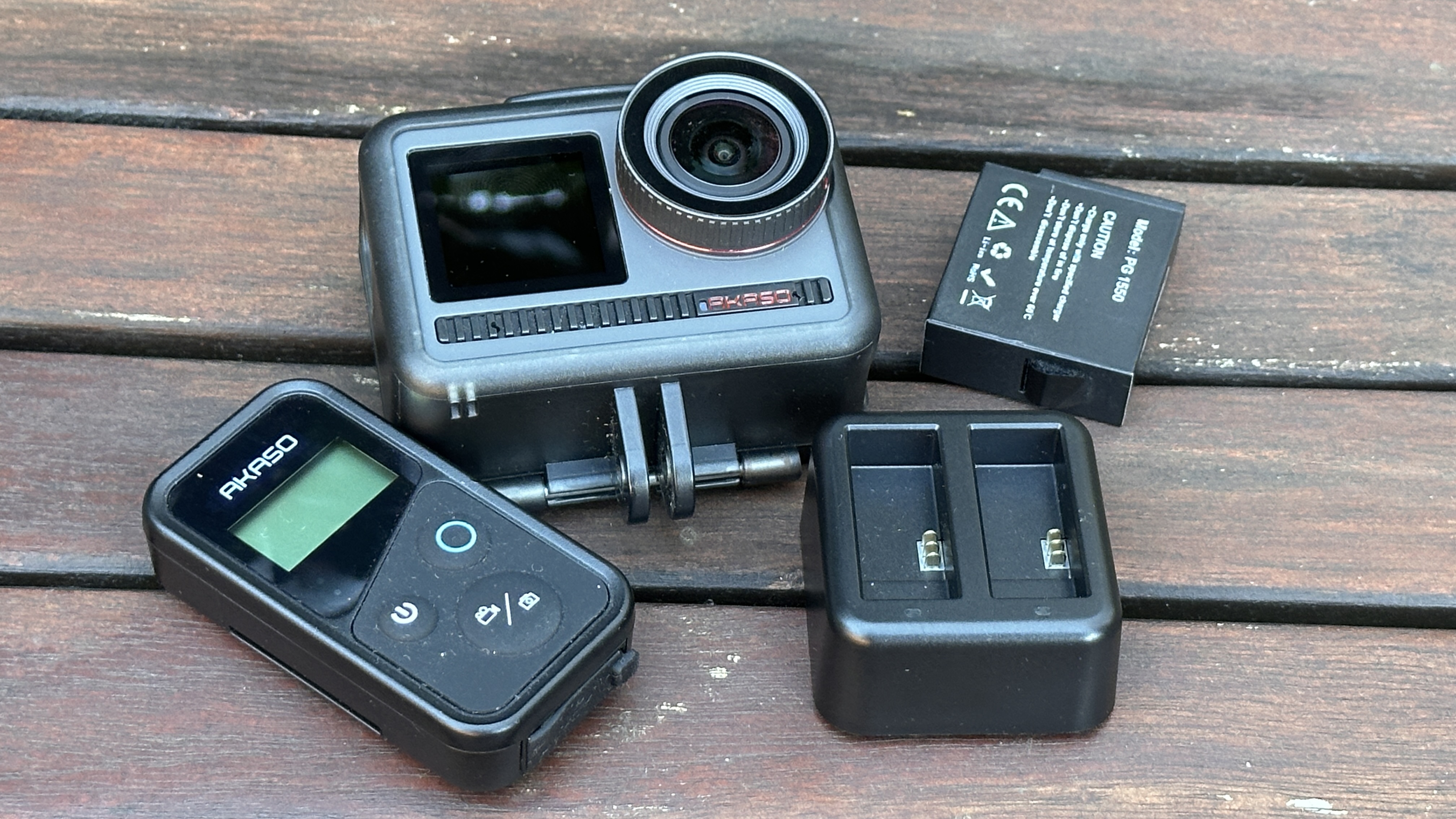
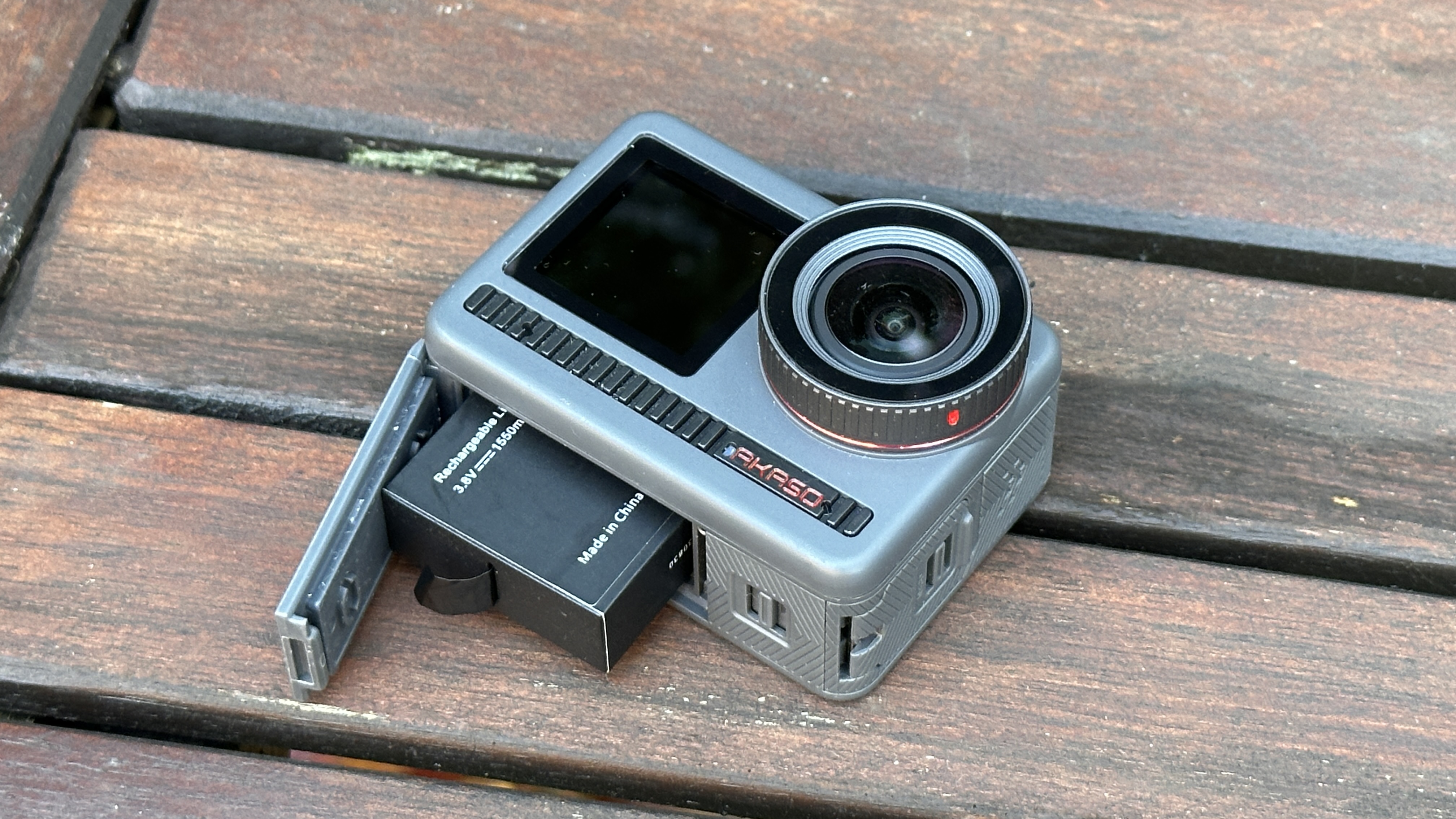
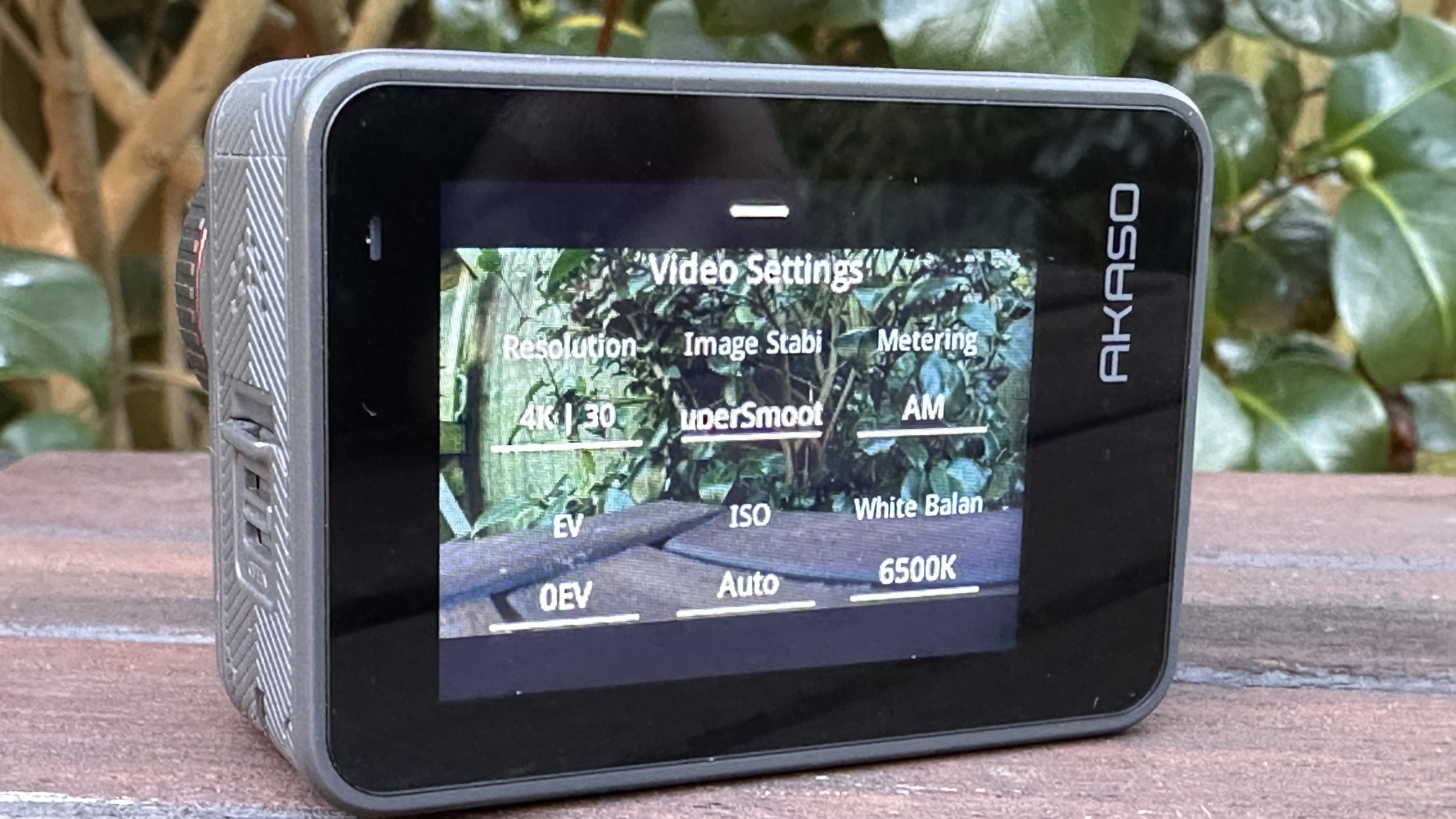
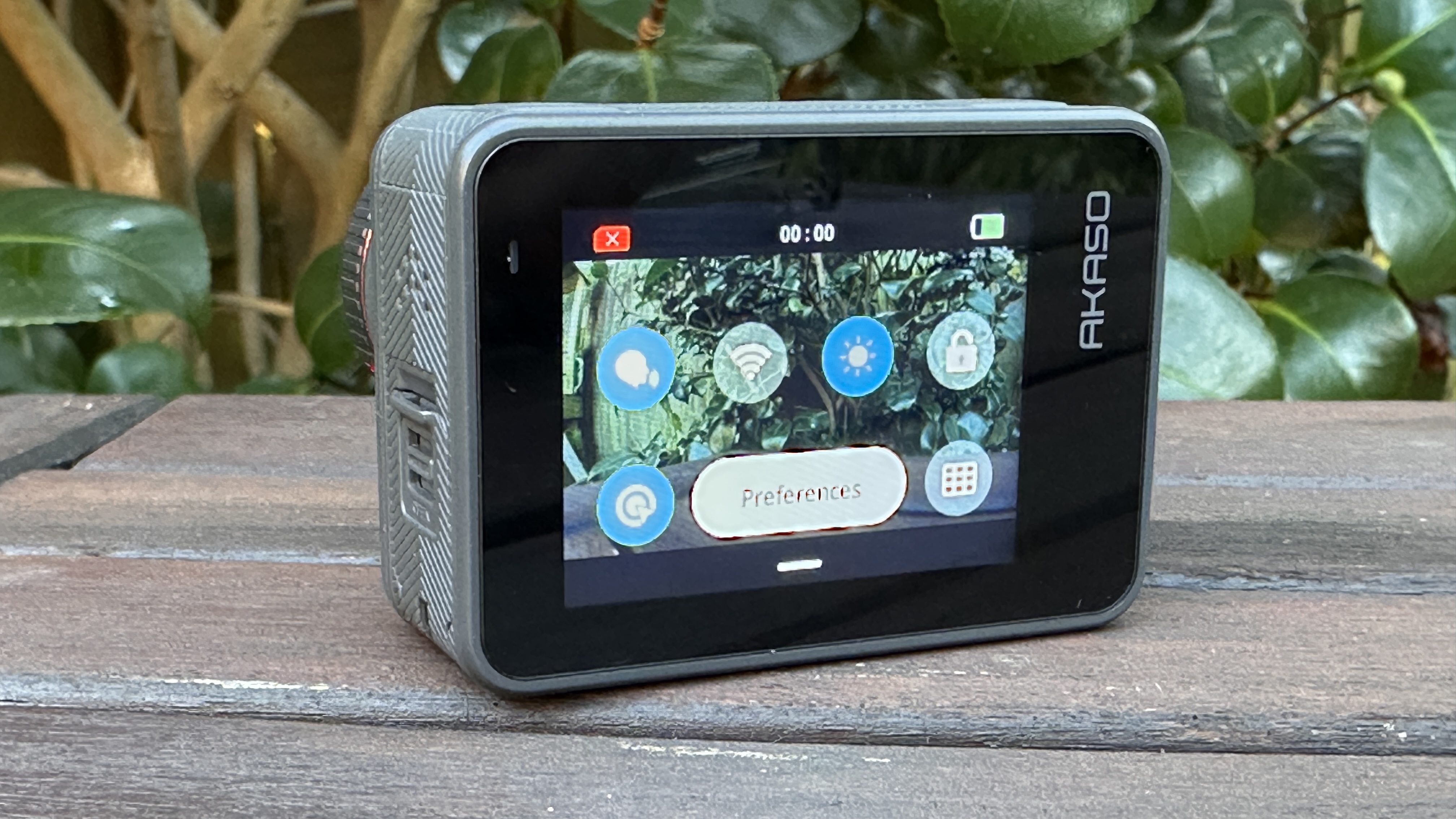
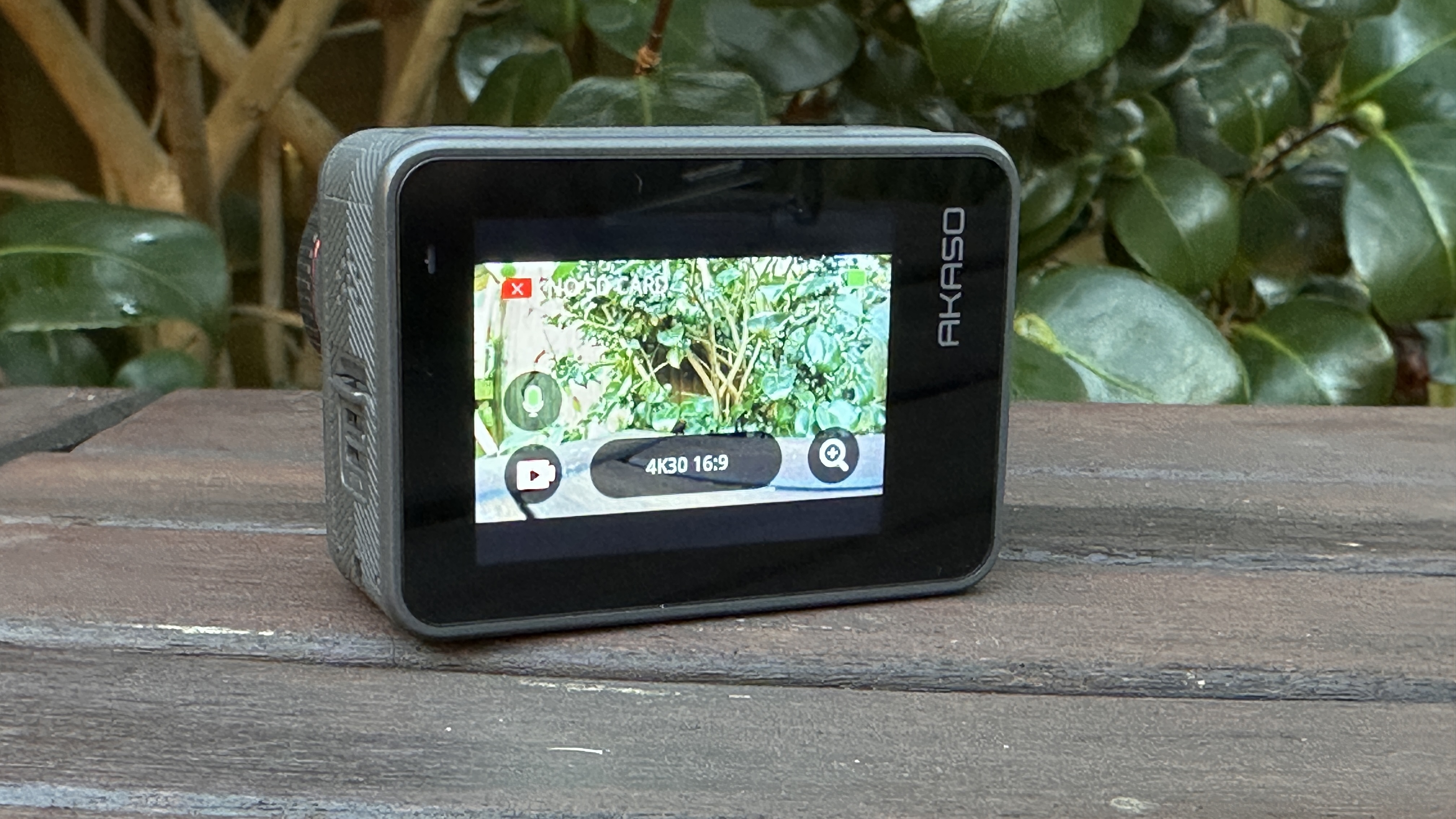
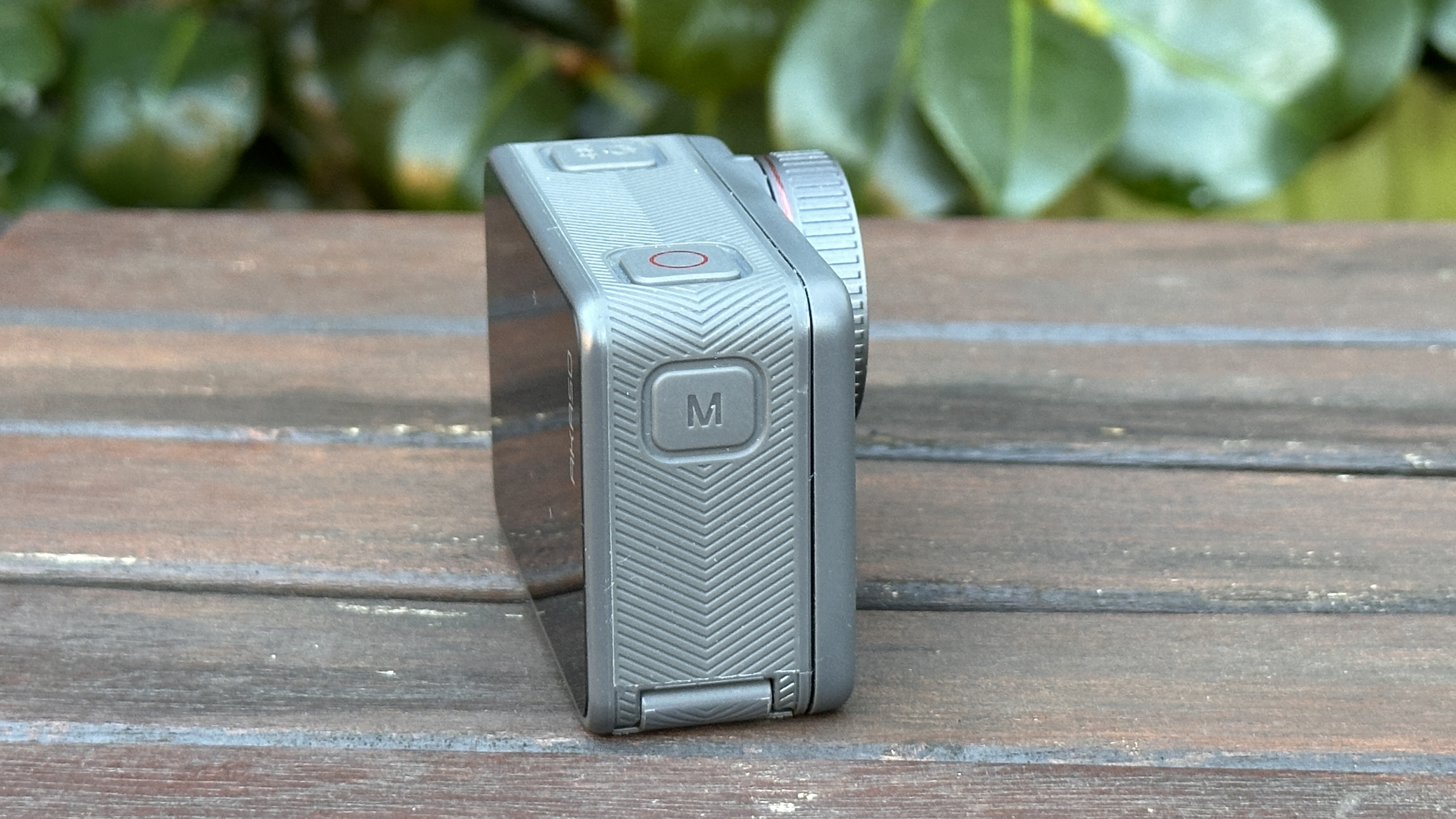
The layout of the camera is straightforward; there is a rear touch-sensitive screen, as well as a smaller square front screen that sits alongside the lens. There are just three buttons on the camera with the power/display button on top and a Recording start/stop button. On the side is the Mode button.
The Micro SD card socket and a USB-C socket are located on the side of the camera, behind a well-sealed waterproof door. The USB-C socket can be used to power the camera or charge the battery.
On the bottom of the camera is an equally well-sealed battery compartment. Akaso supply two batteries, each with a capacity of 1,550mAh, which is a little less than the 1,900mAh batteries of the GoPro Hero 13 Black. However, credit to Akaso for supplying two batteries so that you can always been filming and charging, which, as I found out, is needed with this camera.
The extra battery is just one of a whole host of supplied accessories, including a tiny USB-C dual battery charger, so you can charge both batteries at the same time. A remote control is also included, as well as a camera mounting frame/case, a GoPro style mount, a helmet mount, a handlebar mount, an adhesive pad, a zip tie, a strap, and a lens cloth. It is a very solid set of accessories.
Akaso Brave 8: performance
Overall, the Akaso Brave 8 performed very well, especially considering its price. However, it wasn't without its quirks, and we will discuss those shortly.
Of course, the main thing is the video quality. I did most of my shooting in the 4K / 30fps setting, which produced quite nice footage that is on par with what you would expect for an action with a sensor of this size.
Key to a lot of action cameras is, of course, stabilization performance, and there are three different modes to choose from. The first is no stabilization. Then, there is a Normal, an in-camera stabilization mode with a six-axis gyroscope that applies the EIS 4.0 algorithm to stabilize the footage electronically. Finally, there is a Super Smooth option. This mode records all of the gyroscopic information but doesn't apply any of it in the camera; instead, you upload your clip to the app, where the gyroscopic data is read, and then stabilization is applied.
I found that the difference between the Normal stabilization and the Super Smooth stabilization wasn't as dramatic as I thought it would be. In most circumstances, I believe that users are probably better off just sticking to the Normal option, which softens rather than completely smoothing out any bumps or shakes. The extra step of uploading and applying Super Smooth in the app seems like a significant additional effort for a very little extra reward. Here, the camera falls way behind the stabilization that the latest GoPro cameras offer.
A decent amount of settings allow control of the video image. You can change the exposure metering to any one of several modes, and there is exposure compensation should you wish to make adjustments, which I did.
Generally, the camera produced images with a good exposure. I did tweak it a few times in extreme conditions. For example, filming in a forest could be pretty dark, with the bright light coming through the trees, causing the image to be dark, and then at other times, with no sky in the shot, it lightened the image quite a lot. I found myself making +/-0.3EV changes to the image to balance this out. What it was good at was getting the exposure correct when a face was in the scene, which is great for vlogging and filming your adventures. I advise experimenting with the different metering settings and seeing what suits your needs best.
In addition to exposure compensation, you can also change the ISO sensitivity, sharpness, plus there are two color settings - Normal or Vivid. It may not be the most comprehensive in terms of all the color settings or image styles. Still, it is good enough for the basics, particularly if your goal is capturing memories rather than producing cinematic experiences.
Some lasting memories I captured included filming my children running in and out of the sea on holiday. I put the Brave 8 on a selfie stick and shot low-angle shots of them running and jumping over the waves. The waves sometimes smashed over the camera, completely submerging it in salty Atlantic water. After a few months, the camera still works perfectly fine, with no adverse effects from the sand or saltwater.
The in-camera microphone recorded voices clearly enough, but it should be noted that wind noise was picked up quite significantly, even when it wasn't obviously windy. I wouldn't think of using the audio if I was on a motor or pedal bike. Additional microphones can be attached via USB-C, but sadly, the camera has no mounting points.
The touchscreen worked well and was responsive, with onscreen buttons and navigation presenting no problem. I found it was easy to change settings and navigate the menu.
As well as the included remote control, there is also the option to control the camera via voice commands. Again, I tried this - it is especially useful when you have the camera mounted to a helmet. The real trick is remembering the exact commands that you have to say to start and stop recording and to make sure that you say them clearly.
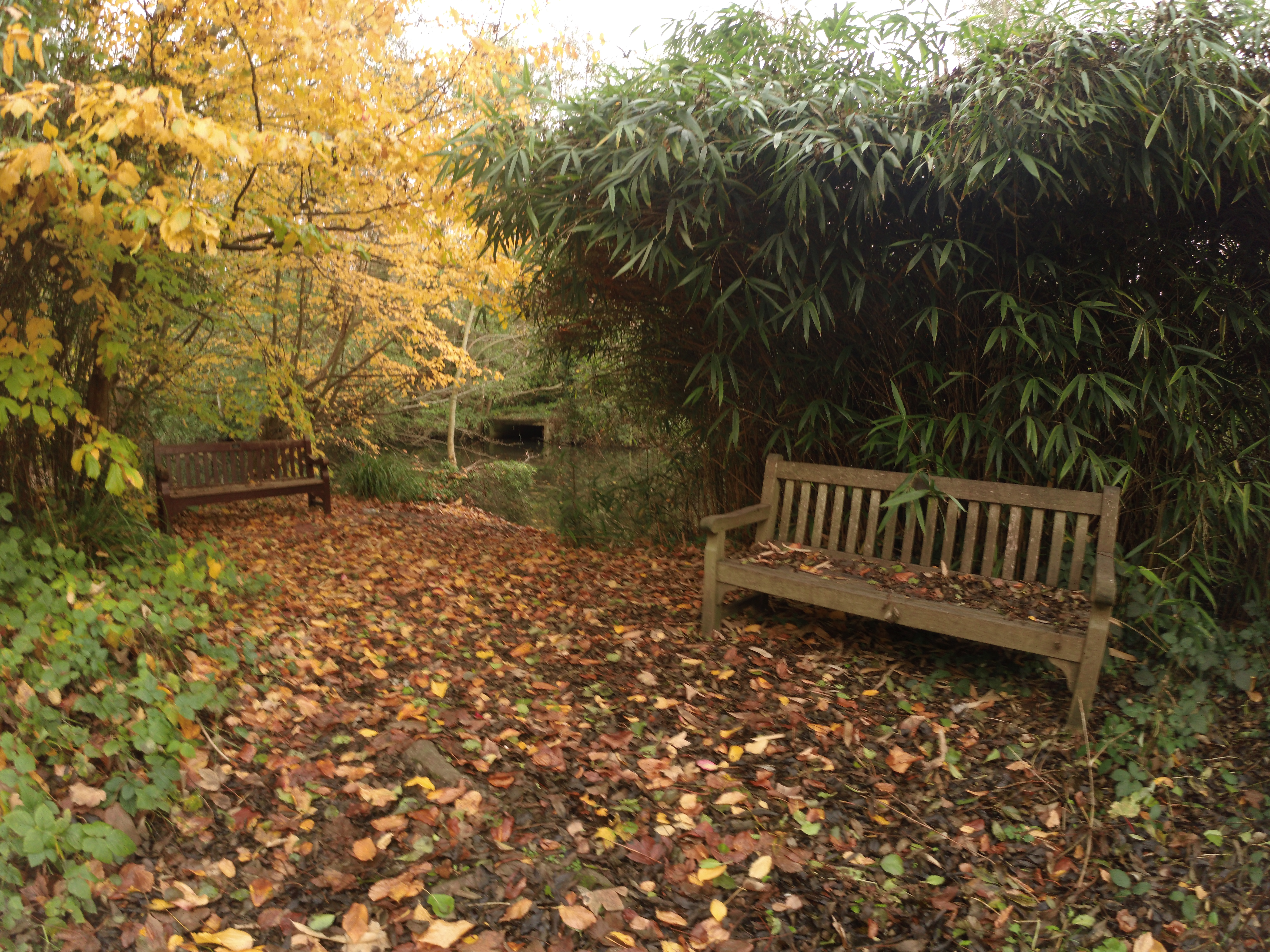
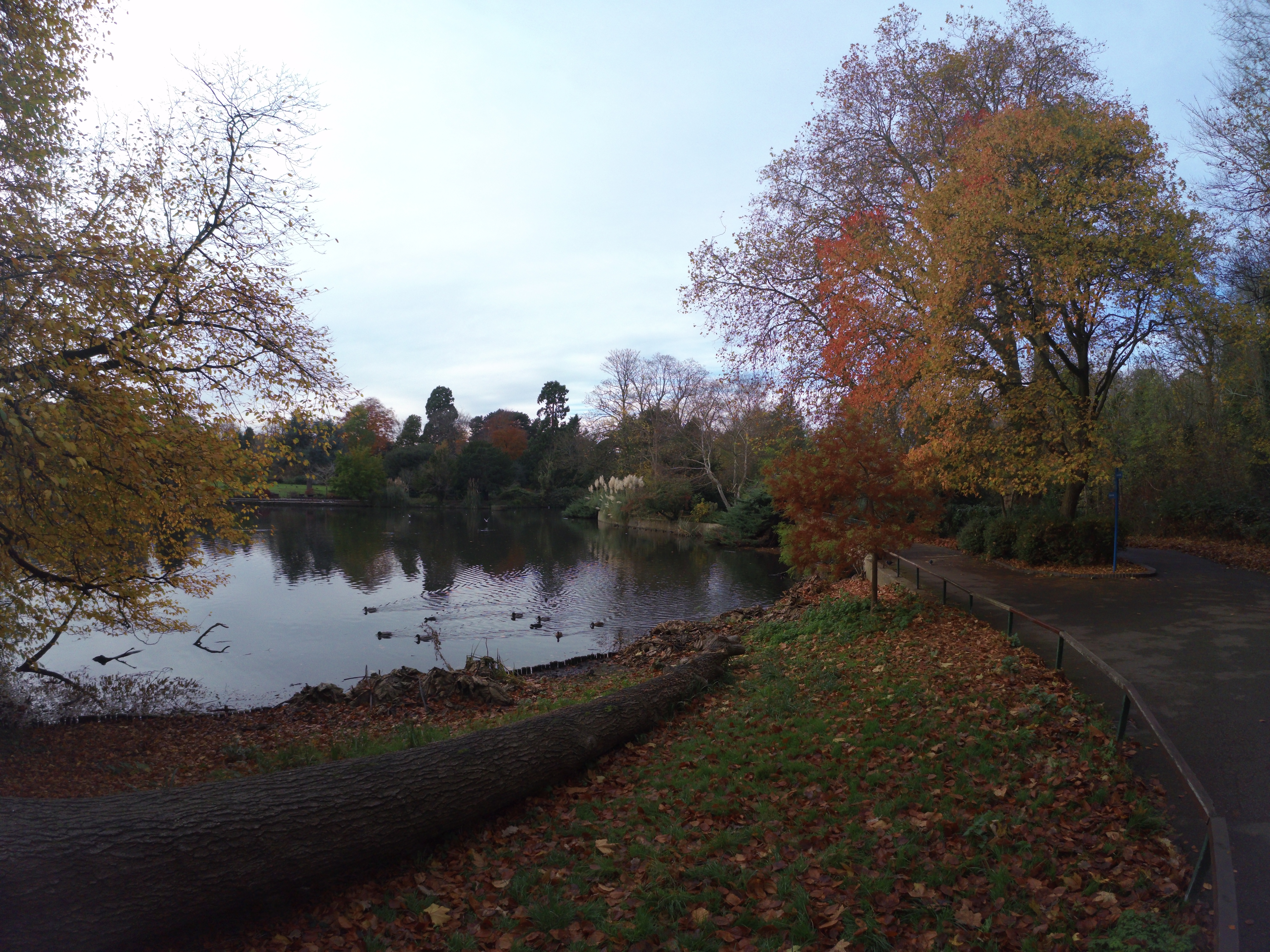
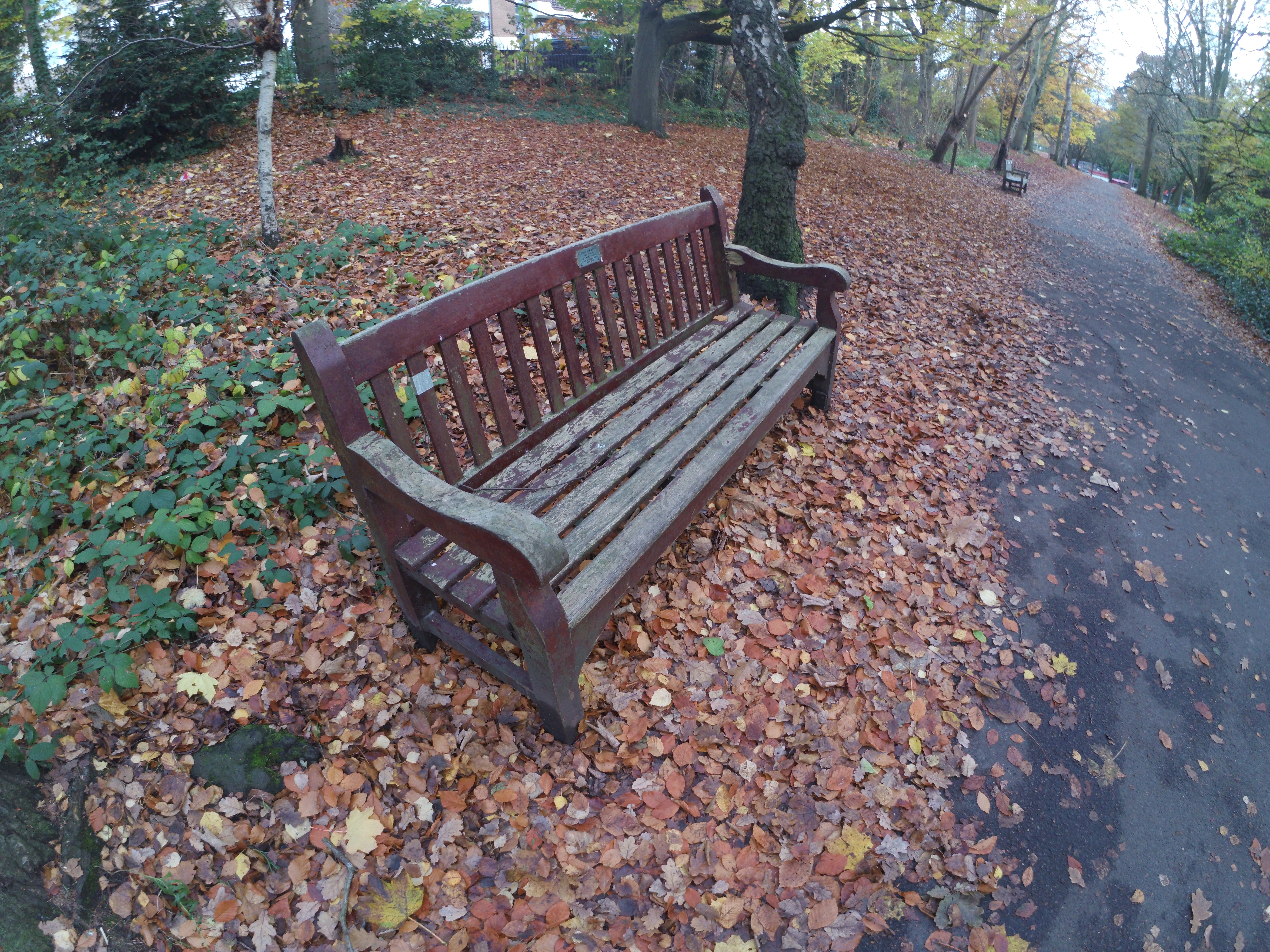

I didn't take many images with the camera as the video aspect is more appealing to people, but the photos look okay. There are problems with exposure, which is largely due to the sensor's small size. There didn't seem to be much HDR processing going on in terms of lightening shadow areas or pulling back highlights like you would get with a smartphone these days.
Given it is a wide-angle lens, you probably want to stick to the 48MP resolution just in case you do want to crop in a little bit more as images are very very wide on the camera.
As you would expect, there are further record modes, such as being able to shoot a time-lapse video or a time-lapse photo, that I'll be honest I didn't delve too much into, however, I did have a quick play around with them, and there seems to be quite a long interval between the images taken to create a time-lapse video, so I wouldn't use it for any activities such as mountain biking or running or skiing or anything like that. If you want to create a little clip of a ride, you're better off using the Hyperlapse setting for that, while the timelapse mode is better for things you would traditionally use a timelapse for, such as clouds passing over city scenes.
Overall, I am pretty impressed with the image quality and features that the Akaso Brave 8 offers. However, it lacks the finesse and quality you expect from a GoPro, DJI, or Insta360 action camera. Sadly, the image stabilization will be a letdown for those wanting super steady footage. Similarly, the microphone and audio processing need some tweaking to bring it up to scratch.
However, Akaso will be a budget action camera brand to keep an eye on as they have a solid foundation on which to build, particularly as some of the issues can be updated via firmware or more power processing in a future camera.
Should I buy the Akaso Brave 8?
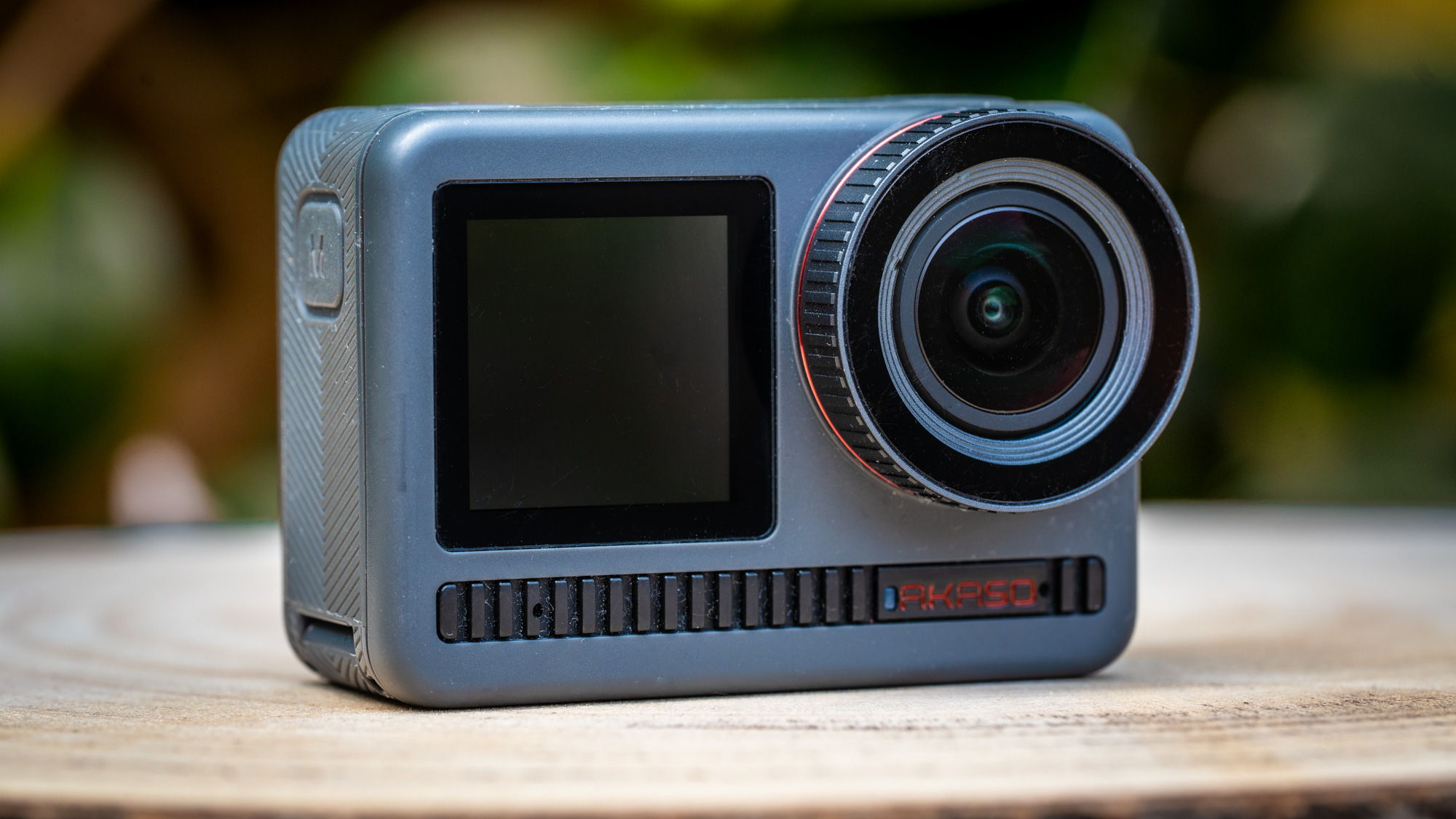
Buy it if...
You can't afford GoPro
Although GoPro has faced competition from DJI in recent years, they are still the leading action camera brand. However, if you can't stretch to a GoPro the the Akaso Brave 8 provides most of the features at a cheaper price.
You want an all-in-one solution
With so many accessories included in the box, the akaso Brave 8 is great for those who want to get started filming straight away rather than trawling Amazon for the mounts and extra batteries that they need.
You want to stand out from the crowd
If you don't want to go with the usual brands and try something new, Akaso seems to be a brand to keep an eye on in the action camera world.
Don't buy it if...
You want to take photos
Although the Akaso Brave 8 can capture photos, its quality falls way behind that of most contemporary smartphones. If you think you will be taking more pictures than videos, then it is probably best to avoid the Akaso Brave 8.
You don't mind having an older kit
If you don't mind an older action camera, then the GoPro Hero 10 Black has many of the same features, but with with better stabilization, for around the same price new, or significantly cheaper if you go with a used camera.
You won't be getting wet.
If you like to keep your feet dry, then something like the DJI Osmo Pocket 3 offers superior image quality and stabilization but obviously lacks the ability to be used underwater.
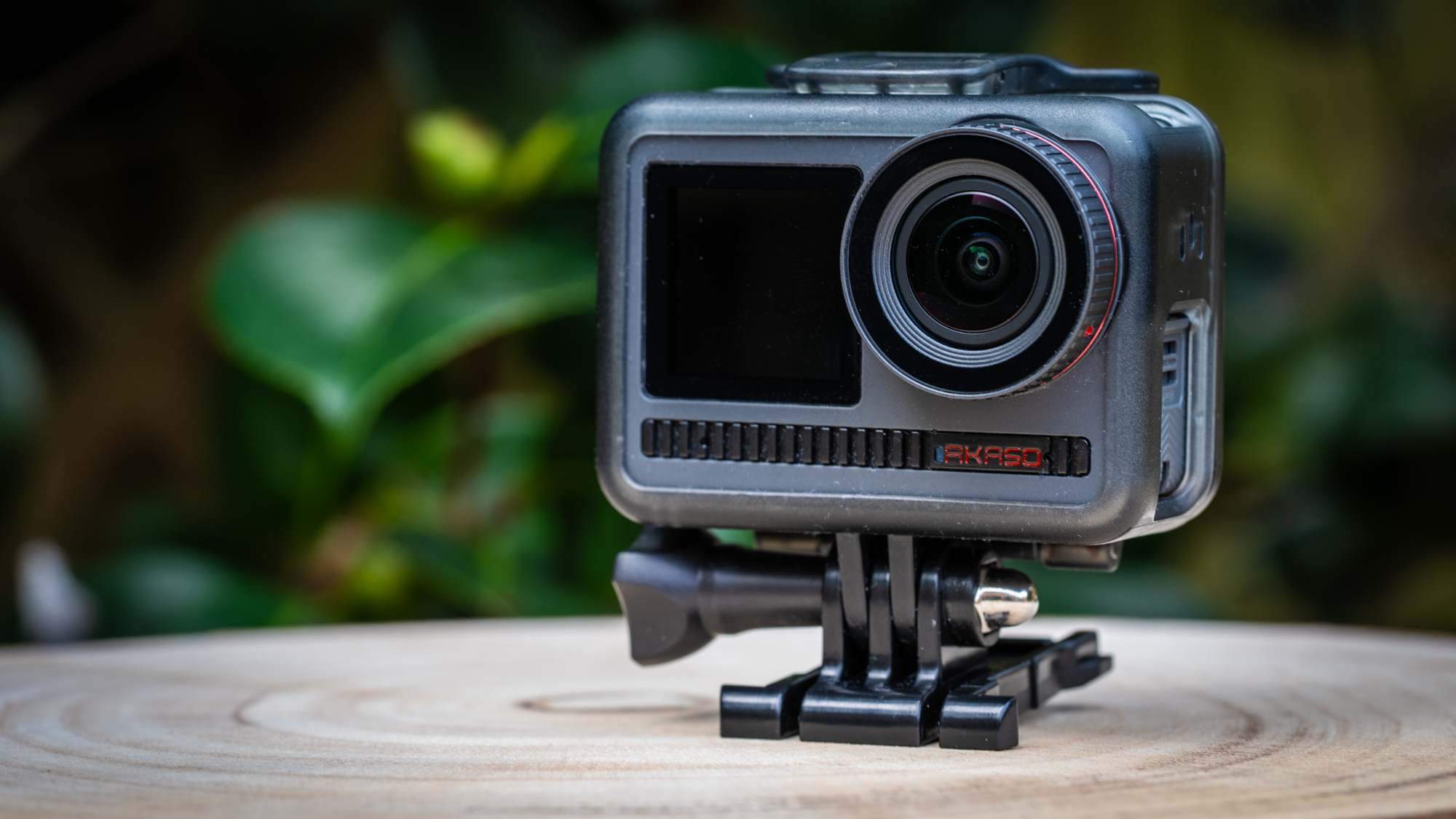
How I tested the Akaso Brave 8
- I used the camera for a couple of months in a variety of situations
- I filmed a hike I did in British Columbia
- I tested the waterproof properties by filming on the beach and in the sea
I used the Akaso Brave 8 for several months as a compact camera to film family events and vacations. I even used it a few times to film my kids playing in the sea, which allowed me to test the camera's waterproof qualities.
On a trip to British Columbia, Canada, I turned the camera on myself, using a selfie stick to film myself while hiking and mounting it on a small tripod while swimming in a glacial lake.
Finally, I used one of the included mounts to attach the camera to my bike helmet. With my iPhone mounted to the bike, I could monitor what was being filmed using the Akaso app.
At various points during the camera's use, I connected it to my smartphone to check footage and add stabilization to specific videos. I also used the voice control options and the physical remote control.
First reviewed January 2025
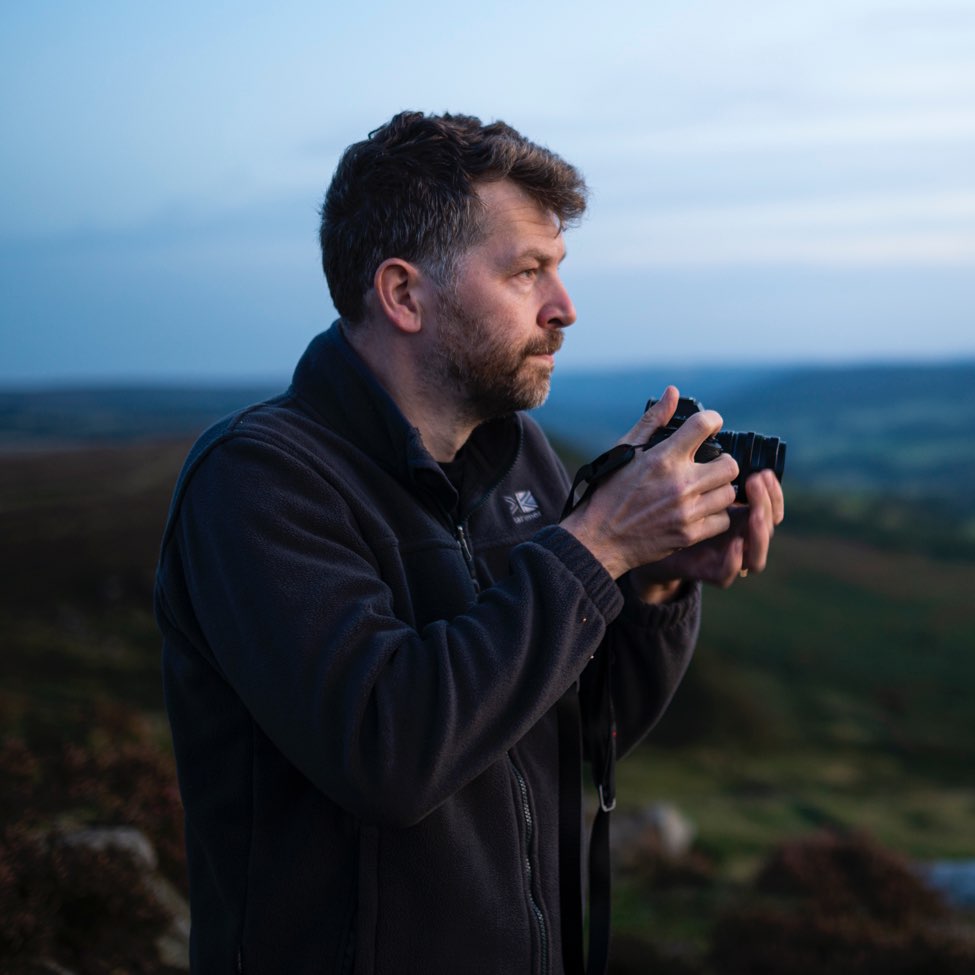
Richard Sibley is a photographer and writer passionate about travel and landscape photography. With over 15 years of experience writing and reviewing in the photo industry, he was formerly Deputy Editor at Amateur Photographer magazine and has had his words and images published in numerous other magazines and websites. Richard combines his love for photography with a deep interest in technology and gadgets. Beyond his professional pursuits, Richard embraces fatherhood and finds solace in gardening, cold plunges, long walks, and listening to podcasts. He is an aspiring minimalist, though the constant lure of new gadgets significantly challenges this ideal.
